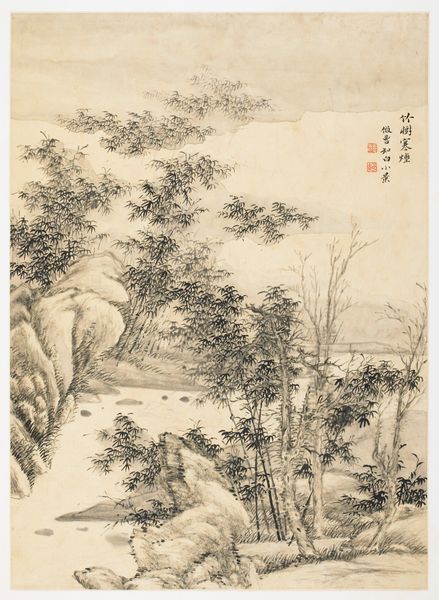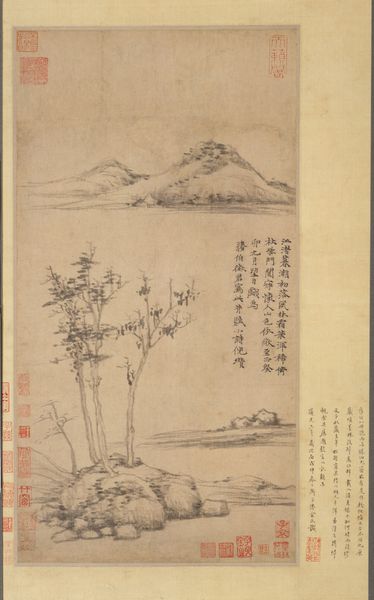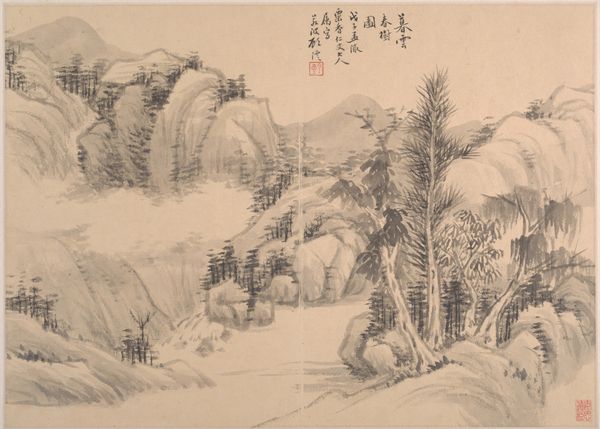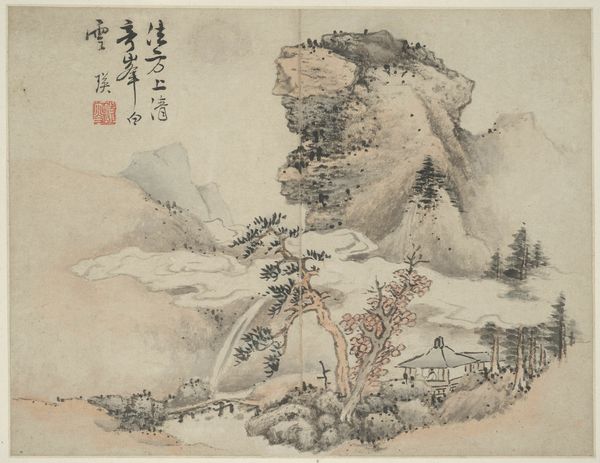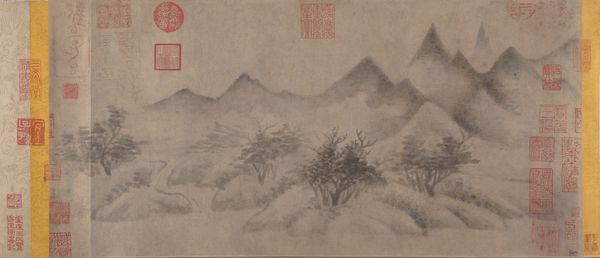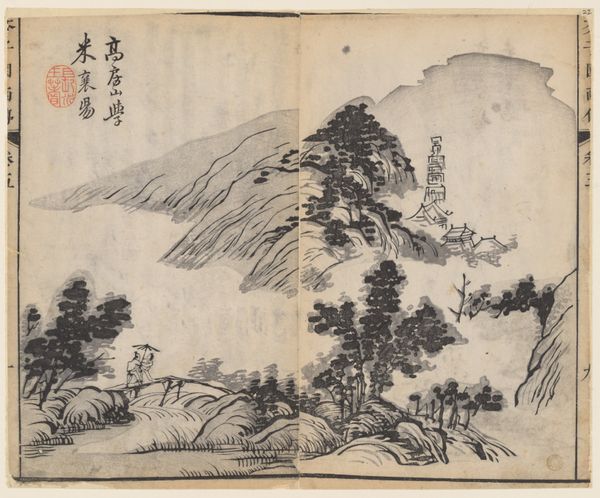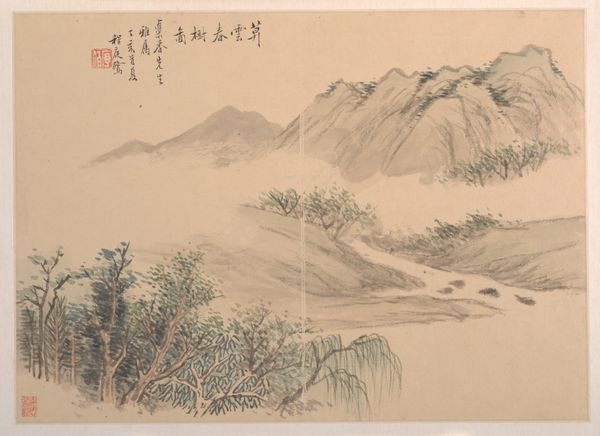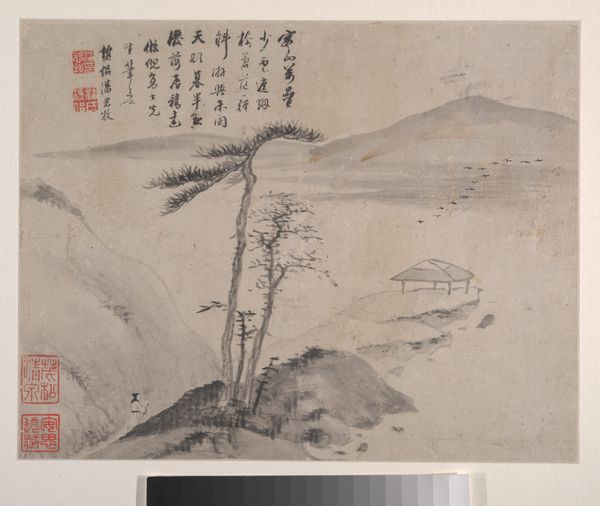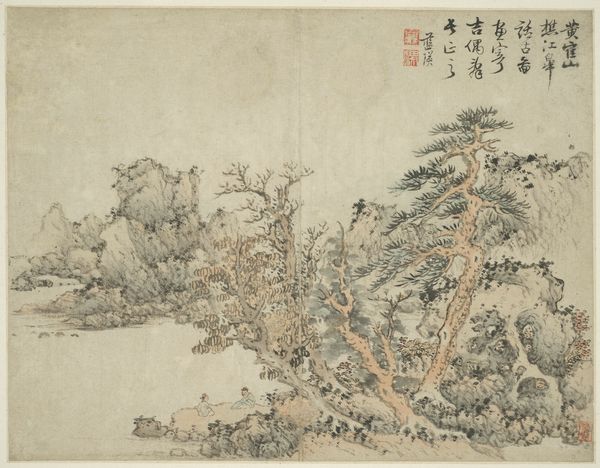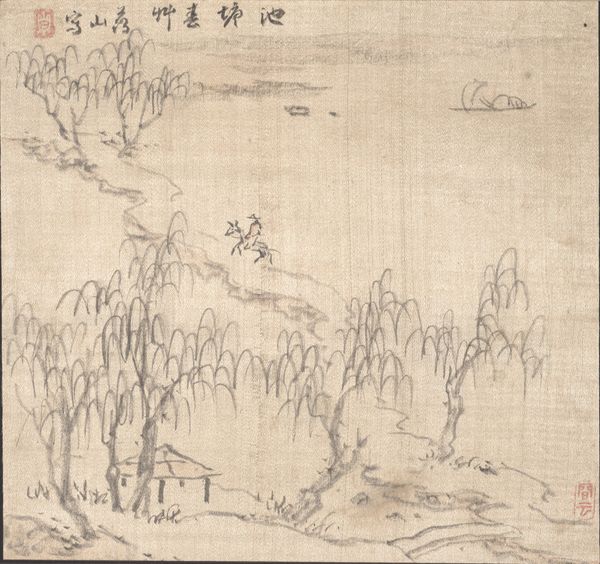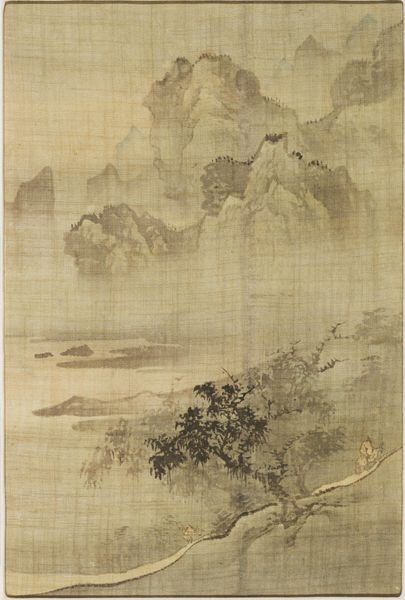
painting, ink
#
painting
#
asian-art
#
landscape
#
figuration
#
ink
#
mountain
Dimensions: .1: 11 1/4 x 12 in. (28.6 x 30.5 cm) .2: 11 1/4 x 12 in. (28.6 x 30.5 cm) .3: 11 5/8 x 12 in. (29.5 x 30.5 cm) .4: 11 1/4 x 12 in. (28.6 x 30.5 cm) .5: 11 7/8 x 12 in. (30.2 x 30.5 cm) .6: 11 5/8 x 12 in. (29.5 x 30.5 cm)
Copyright: Public Domain
Sheng Maoye painted these landscapes after Tang Poems around 1640, using ink and color on silk. Observe the leafless trees, a recurring symbol in Chinese art, evoking a sense of melancholy and introspection. These bare trees are not merely representations of winter; they echo across time, resonating with similar motifs found in earlier works, where stark landscapes reflect states of emotional or spiritual barrenness. Note also the boat with figures, a motif laden with cultural significance. The boat, often a symbol of passage and transition, appears frequently in art across cultures—think of Charon's boat ferrying souls in Greek mythology. In Chinese art, it is often associated with reclusion, escape, or the journey of life itself. Consider how the subconscious might draw upon such familiar symbols to convey a sense of longing or resolution. Thus, we see how motifs evolve, carrying collective memories and emotional power across epochs.
Comments
No comments
Be the first to comment and join the conversation on the ultimate creative platform.
